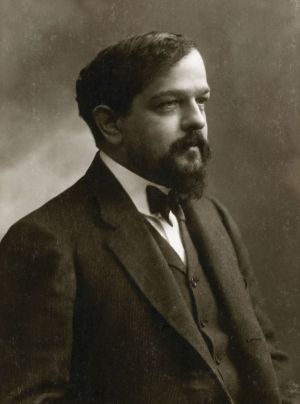Concert
Deutsches Symphonie-Orchester Berlin

The dancer Ida Rubinstein as Saint Sébastien from: programme booklet of the premiere in Paris, Théâtre du Châtelet, 1911, Bibliothèque Nationale Paris
As a young artist he revered Richard Wagner and his music. Someone who was a regular guest at the legendary Tuesday evenings at the home of poet Stéphane Mallarmé could hardly be anything else. If not the spokesman, Mallarmé was one of the leading exponents of Wagnérisme in France. Claude Debussy travelled to Bayreuth, and like many such pilgrims before him he would return a changed man. He turned away from the German music dramatist and penned sharp polemics against him in his journalism. Only Parsifal retained his approval.
Yet, as with many heavy rejections, Debussy’s anti-Wagnerian stance remained fixated on the object of his polemics. In Pelléas et Mélisande he wrote his own “Tristan” and with Le Martyre de Saint Sebastien his “Parsifal”. “What interests me”, said Robin Ticciati, “is the similarity of both composers’ thinking about sound – despite the extent to which Debussy distanced himself from Wagner. With Amfortas and Saint Sebastian Christ-like characters play a significant role in both works: Amfortas with his wound and Sebastian, who was crucified. Both seek out pain and suffering, in one case it is directed firmly inwards, in the other it is made public. Both works are concerned with some kind of transposition of the religious into theatre,” and the medium through which this amalgam takes place is music.
This performance goes beyond the “Symphonic Fragments”, a purely orchestral short version that was not made by the composer, instead Debussy’s music will be played in its entirety – with the songs for soloists and chorus, and the spoken part of the Saint – in the version in which Debussy saw suggestions of how he imagined the music theatre of the future.
Richard Wagner [1813-1883]
Parsifal
Prelude to act I and suite from act III for choir and orchestra [1876-1882]
compiled by Claudio Abbado:
Karfreitagszauber – Verwandlungsmusik – Ritterzug – Schlusschor
Claude Debussy [1862-1918]
Le Martyre de Saint Sébastien [1911]
Incidental music to mystery play in 5 acts for soli, speaker, mixed choir and orchestra
Text by Gabriel d’Annunzio [1863–1938]
Erin Morley soprano
Anna Stéphany mezzo-soprano
Katharina Magiera alto
Dame Felicity Lott narrator
Rundfunkchor Berlin
Michael Alber vocal coach
Deutsches Symphonie-Orchester Berlin
Robin Ticciati conductor

Claude Debussy
© av Félix Nadar
A Deutsches Symphonie-Orchester Berlin event in collaboration with the Rundfunkchor Berlin and in cooperation with the Festspiele / Musikfest Berlin